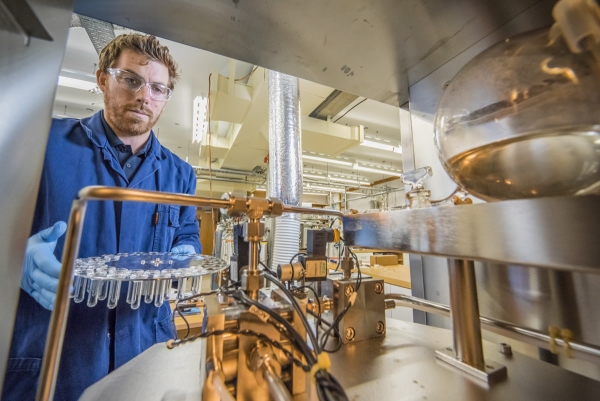Carbonates are studied using the MAT252 and MAT253 which are equipped with Thermo Scientific Kiel (III & IV) devices, providing automated high-precision determinations of δ13C and δ18O in individual foraminifera and other carbonate samples.
NIWA is a leading institute in New Zealand doing high resolution analysis of stable isotopes in carbonates to identify environmental change over timescales of tens to thousands of years. We use these techniques on materials as diverse as foraminfera, shells, fish earbones, and limestone structures in caves. These analyses provide both δ13C and δ18O, with precisions of 0.04‰ and 0.08‰ respectively.
Planktonic foraminifera are single-celled organisms which secrete their tests using oxygen and carbon from the water in which they live. Isotopic analysis on these, and on deepsea corals and brachiopods, tells us much about how the marine climate has changed in the past, including relatively abrupt changes in ocean circulation.
Locked inside speleothems, including stalactites and stalagmites, is a historical record of heavy rain seeping into caves. Isotope analysis here helps define risk assessment models (e.g., for tropical cyclones) and improves understanding of climate changes.
Stable isotopes in coastal fauna such as paua shells provide a picture of local climate variability and help us estimate paua age and growth rate; information vital for assessing the sustainability of these coastal fisheries.
Isotope analysis of fish otoliths (earbones) is clarifying the life histories of some significant commercial species.
These analyses all provide critical information for understanding freshwater, marine, and terrestrial ecosystems, particularly with respect to historical climate change and environment and biology of marine organisms. It is now possible to study past changes in the ocean and climate, provide improved data for climate modelling, and help predict the response of the ocean to climate change. Also to reconstruct seasonal profiles of bygone winters and summers, unravel geographic fish migration patterns and life histories, or even derive daily records of climate for the Miocene (20 Ma).
Publications
A selected list of publications illustrates NIWA's recent research using a Kiel device, which provides automated high-precision determinations of δ13C and δ18O in individual foraminifera and other carbonate samples.


